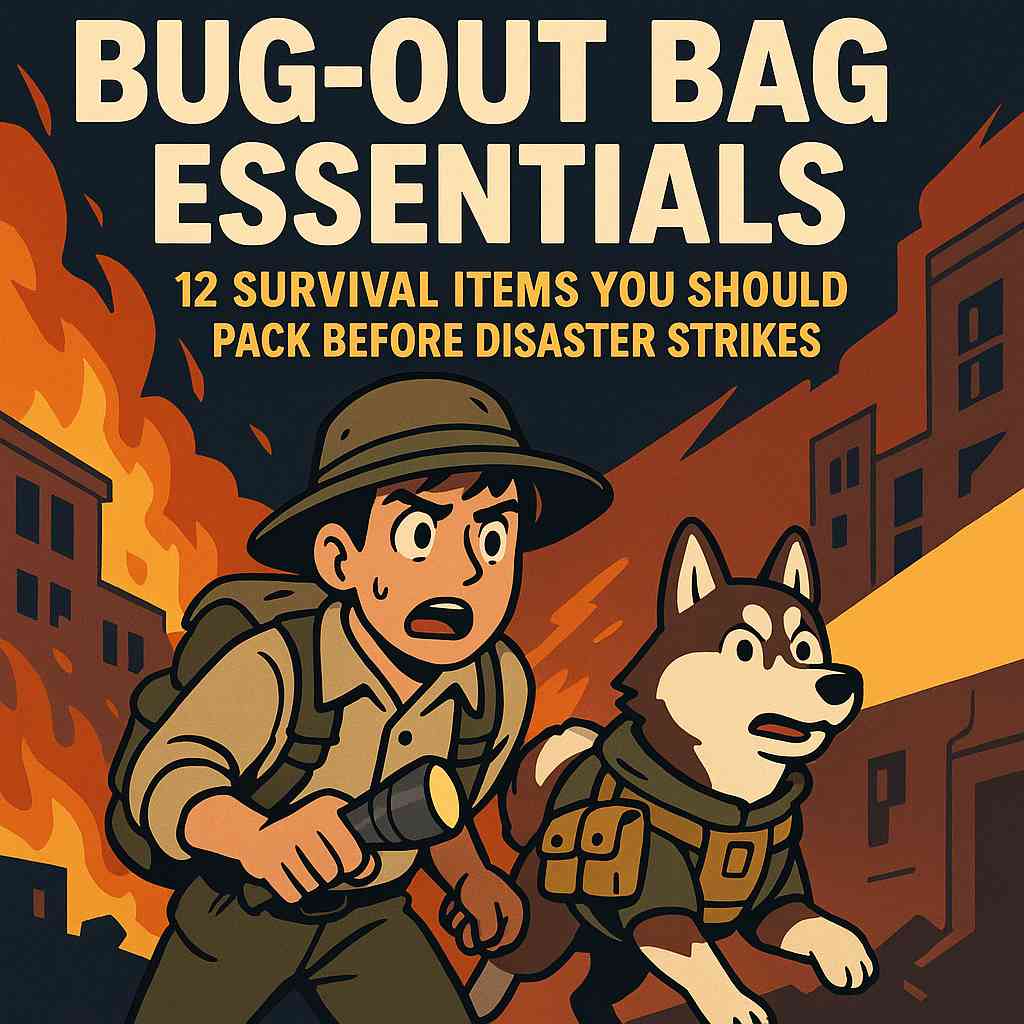When disaster strikes, there’s no time to pack. The power goes out, roads are jammed, and panic sets in. You only have minutes to grab your gear and go. But what if your bag isn’t ready? Without the right items, a bug-out situation can quickly become a nightmare. This guide walks you through the essential items to pack in your bug-out bag—before it’s too late.
✅ Clean Water & Filtration
Water is your top priority in any survival situation. Without electricity or access to clean tap water, having portable water is non-negotiable. Pack at least two liters of bottled water per person per day, and include a portable water filter or purification tablets. Lifestraw or Sawyer filters are lightweight and effective. Make sure to rotate your stock every 6 months. A metal canteen is also helpful for boiling water over fire if needed.
✅ Non-Perishable Food
During a bug-out, high-calorie, shelf-stable food is crucial. Include protein bars, dried fruits, jerky, trail mix, and MREs (Meals Ready to Eat). Avoid foods that require cooking or refrigeration. Your goal is to eat on the go. Peanut butter, canned tuna with pull tabs, and vacuum-sealed rice or pasta are good options. Don’t forget a small spork or utensil set. Pack at least a 3-day supply per person.

✅ First Aid & Medications
Injuries during evacuation are common. A compact but well-stocked first aid kit can make the difference. Include bandages, antiseptics, tweezers, pain relievers, antihistamines, and any personal medications. If possible, add burn cream and a small emergency medical guide. Use waterproof pouches to keep your supplies safe. Also consider a tourniquet and gloves for serious trauma situations. The goal is to manage small injuries before they become big problems.
✅ Survival Tools & Gear
This section can be the difference between comfort and chaos. Your bag should include a multi-tool, flashlight with extra batteries, emergency whistle, waterproof matches or a firestarter, and a compact tent or tarp. Add a change of clothes, emergency blanket, and hand warmers. Duct tape, rope, and paracord are versatile and space-efficient. Don’t forget hygiene items like toothbrush, soap sheets, and wet wipes. A solar-powered charger can keep your phone usable.
A well-prepared bug-out bag is more than just gear—it’s your lifeline when the world goes silent. Every item you pack could mean the difference between struggle and survival. Start small, build steadily, and review your kit every few months. The best time to prepare is before the emergency happens. Be the person who’s ready when others panic.
✅ Frequently Asked Questions (FAQ)
- Q1. What is a bug-out bag?
A bug-out bag is a portable kit that contains essential items for survival in case you need to evacuate your home quickly due to an emergency. - Q2. How much should a bug-out bag weigh?
It should ideally weigh no more than 15–20% of your body weight to ensure mobility and endurance. - Q3. How long should my bug-out bag last me?
A standard bug-out bag is designed to support you for 72 hours or 3 days, but some kits can last up to a week. - Q4. Where should I store my bug-out bag?
Keep it in a visible, easy-to-access location near your main exit. Many people also keep one in their car.
Want to go deeper with your emergency prep? Check out our guide on how to prepare no-cook meals during a blackout—perfect for bug-out scenarios where you can’t rely on power. And don’t miss our tips on storing water long-term, so your emergency kit always includes clean hydration options.

